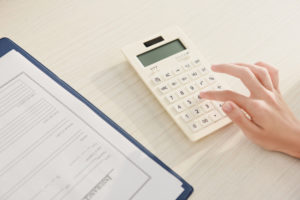During trial, attorneys are required to practice and follow the rules of evidence while presenting their case to regulate what the jury can use to reach its verdict. The rules of evidence were established to ensure fair administration of every proceeding, reduce expenses and delays, and safeguard the jury from reaching a verdict due to an unrelated or misleading factor. In the United States, federal courts follow the Federal Rules of Evidence and state courts normally follow their own state rules. State rules of evidence often stem from the federal rules. Given the variations in state rules of evidence across jurisdictions, the Federal Rules of Evidence (FRE) will be used to explain the concept of impeachment evidence.
Impeachment evidence refers to evidence a truck accident lawyer may use during a witness’s testimony to challenge their credibility. This can involve highlighting impairments in perception or memory, revealing inconsistencies, demonstrating bias, or attacking a witness’s character for untruthfulness. Impeaching a witness can be done by presenting physical evidence, such a police report or phone log, or by asking questions that contradict previous testimony to reveal an inconsistency. Federal Rules of Evidence 607, 608, 609, 610 and 613 govern the impeachment of witnesses.
Federal Rule of Evidence 607 states that any party may impeach a witness to attack their credibility, including the party that called the witness.
Federal Rule of Evidence 608 controls the form of using a “character witness” to impeach another witness’s character for truthfulness or untruthfulness.
608(a) allows a character witness to testify about a witness in the form of opinion or reputation only about a witness’s character for (un)truthfulness. A character witness cannot testify about the truthfulness of a witness unless that witness’s truthfulness was already attacked.
608(b) allows an attorney to inquire about specific instances of conduct of the witness on the stand or of a witness whose character the witness being examined has testified about. To inquire about specific instances of conduct, the evidence being used must show that the prior instance is probative of (un)truthfulness and that there is a good faith basis for the inquiry. Here, an attorney’s goal would be to show the jury that a witness has a dishonest character because they have lied before and will lie again.
Federal Rule of Evidence 609. In general, this rule allows attorneys to impeach a witness’s character for truthfulness with prior crimes they have been convicted of. For a court to allow this type of impeachment, the attorney must establish that the elements of the crime involved a dishonest act or false statement.
Federal Rule of Evidence 610 prevents attorneys from using a witness’s religious beliefs or opinions to attack or support the witness’s credibility.
Federal Rule of Evidence 613 allows a party to impeach a witness with their prior inconsistent statements. The requirement for this rule depends on whether the prior inconsistent statement concerns a collateral matter (only relevant because it impeaches a witness) or non-collateral matter (impeaches a witness and goes to a fact in consequence).
If the statement involves a non-collateral matter, an attorney may impeach a witness using non-extrinsic evidence (evidence out of witness’s mouth who is on the stand) or extrinsic evidence (anything else, not out of witness’s mouth who is on the stand.) While impeaching the witness, the attorney need not show or disclose the content of the extrinsic evidence to the witness, but will need to, on request, show or disclose the content to the adverse party’s attorney. The attorney also needs to give the witness an opportunity to explain or deny the statement before using extrinsic evidence. If the witness’s statement(s) are still inconsistent after the witness has been given the opportunity to explain or deny her prior statement, then an attorney can use extrinsic evidence to impeach the witness.
If the statement involves a collateral matter, an attorney may impeach a witness using only non-extrinsic evidence (evidence out of the witness’s mouth who is on the stand). The attorney must accept the witness’s answer and cannot pursue the issue further with any extrinsic evidence (anything else, not out of the witness’s mouth who is on the stand). Since the party can only use non extrinsic evidence to impeach the witness over this collateral matter, the attorney does not have to provide the party with notice before asking about the prior inconsistent statement, but the attorney must disclose the statement to the adverse party’s attorney upon request.
Thanks to Eglet Adams for their insight on impeachment evidence.
If you are facing legal troubles, contact an attorney located near you for help.


